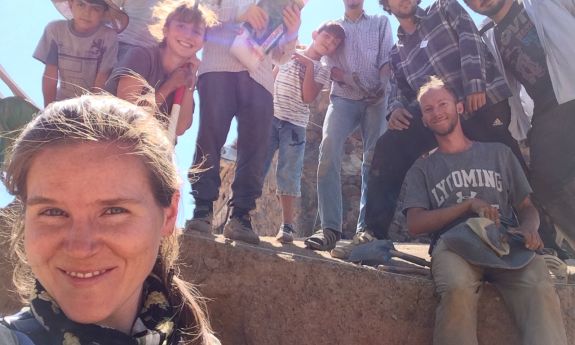Earthquake Hit a Region of Generosity and Cultural Significance
Classical studies professor describes a community she knows well

All of the cultural heritage of this region is in jeopardy right now. Preliminary reports say many of these museums are still standing, but there’s probably damage to the sites that we don’t know of yet.
Kathryn Morgan
Tragedy in Türkiye and Syria
Professor Kathryn Morgan is helping to organize an event in Chapel Hill this weekend to highlight the importance of the region and its need for help right now.
The free, public event will be at 4 p.m. Sunday, Feb. 12, at the Sancar Turkish Cultural and Community Center on East Franklin St. in Chapel Hill.
Among the speakers will be Robert Pearson, a former U.S. ambassador to Turkey.
The region of southeastern Turkey that has sustained so much damage is of massive significance to archaeologists and historians. Morgan has spent her time at Zincirli Höyük, a village that sits atop the ancient city of Samal. The heyday of the site dates to between 900 and 600 B.C., when it became part of the Assyrian Empire, based in what is now Iraqi Kurdistan.
The site is rich in ancient palatial buildings and gateways built of massive blocks carved with ornate reliefs of mythical beasts, feasts and processions. Recent work has focused on even earlier remains, from around 1650 BCE, when the site may have played a role in long-distance wine trade.
“This is a region where we can investigate the origins of states, the origins of agriculture, even the origins of settled communities—these sites help us start understanding why and how human beings came together to form communities,” Morgan said. “How they worked out rules and structures, under what circumstances, and why that’s important to us. Places like Göbeklitepe, Arslantepe, Tell Tayınat. Famous sites that can answer those questions are in this region of southeastern Turkey.”
And the fate of much of this history is still unknown.
“All of the cultural heritage of this region is in jeopardy right now,” Morgan said. “Preliminary reports say many of these museums are still standing, but there’s probably damage to the sites that we don’t know of yet. A lot of this archaeological material is awaiting analysis in excavation depots that nobody can get to right now.”
The economic damage will be massive as well, Morgan added. A historically less-developed area of the country, the region has seen a surge in economic investment of late, particularly in attracting tourists to museums there.
“Heritage tourism in particular has been an economic lifeline for these communities,” she said.
Learn more about relief agencies working in Turkey and Syria
Vigil at Duke Chapel
More than 100 people showed up Thursday outside of Duke Chapel to show solidarity with the earthquake victims in Turkey and Syria. Organized by Duke students, the emotional event allowed members of the Turkish community at Duke to share their stories and feelings following a series of earthquakes that leveled 10 cities and left close to 13 million homeless under freezing winter conditions.
The speakers thanked the participants for their support. The most difficult thing for them, said engineering graduate student Mert Gokduman, is “not being able to be there with our families.”
Photos by James Todd

